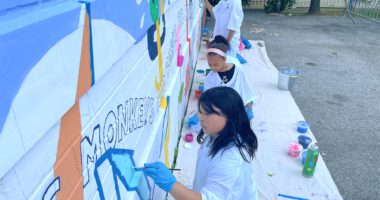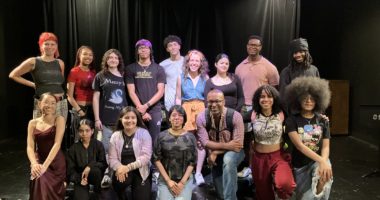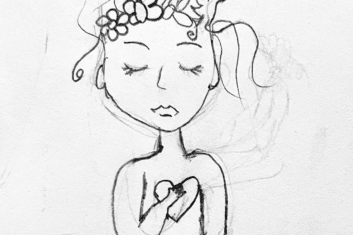On October 29th, TATIP reconvened for the second Saturday training day to focus on lesson planning, objectives, and more.
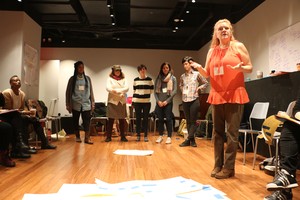
This week’s training was led by Program Director Patti Chilsen and TATIP Facilitator T. Scott Lilly. We started off with our graffiti wall opening ritual, responding to prompts about our favorite lessons in school, what we’d like to know more of, etc.
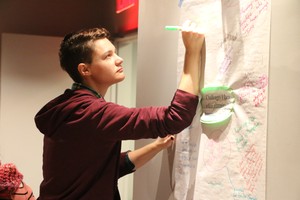

Scott then led the group through a movement and rhythm warm up to get us prepared for the day.




After preparing our bodies and minds for a full day ahead, we sat down and assumed roles as students, while Patti and Scott guided us through a model lesson that would use sensory details, gestures, and movement to express our thoughts and memories about our families, cultures and communities. The facilitators started by having us brainstorm sensory details from our childhoods; what we ate, heard, colors we saw, people’s smells, etc. Afterwards, we took a look at Kelly Norman Ellis’s “Raised by Women” and talked about the sensory details found throughout the poem.
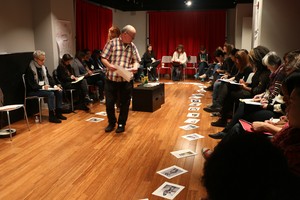

After embodying the poem through gestures and movement, we set about creating our own poems in the style of Ellis’s.
“Raised by”
by Rabih AhmedI was raised by
Africa and Islam
The red and blue rangers for brothers
Since I wasn’t allowed to be the gold ranger
I had to be the pink one
I had a thing for pink
for Barbie
I would later realize Barbie never had a
thing for me.
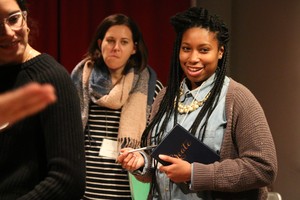

After sharing our individual poems, the facilitators broke the room into groups of five and charged them with creating a collaborative community performance piece utilizing lines from their various individual poems. Each group was given a specific “secret ingredient” in addition to the performance piece guidelines.
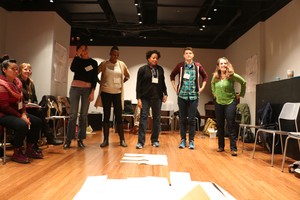

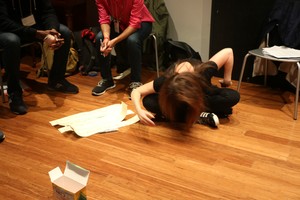

Each group shared their performance and reflected on the process with the rest of the participants.


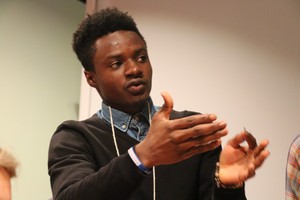

The remainder of the day was dedicated to breaking apart a lesson plan into concrete activities that build upon one another, also known as “scaffolding a lesson”.
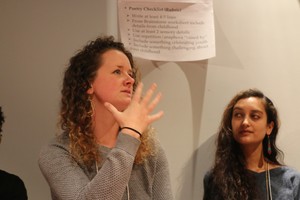

It is important for teaching artists to not only translate their creative processes to the classroom, but to be able to exhibit them through clear activities our students can experience. This way, a student will build up to the artistic objectives we set out for them to learn in our residencies and will take away the necessary tools of creation they need to become not only strong artists, but strong citizens who think both critically and creatively.
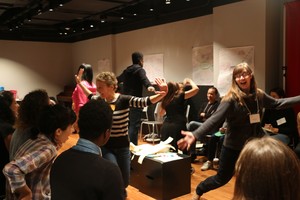

Our trainees have the coming weekend off in order to prepare for our November 12th workshop, where they’ll be presenting collaborative lesson plans with a partner for the entire group. Stay tuned for more as our trainees progress through the program!

